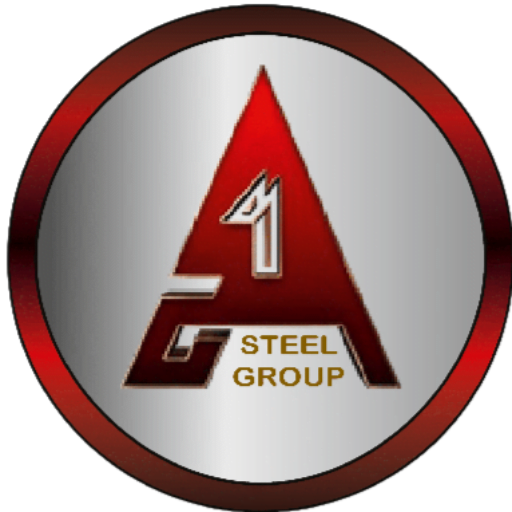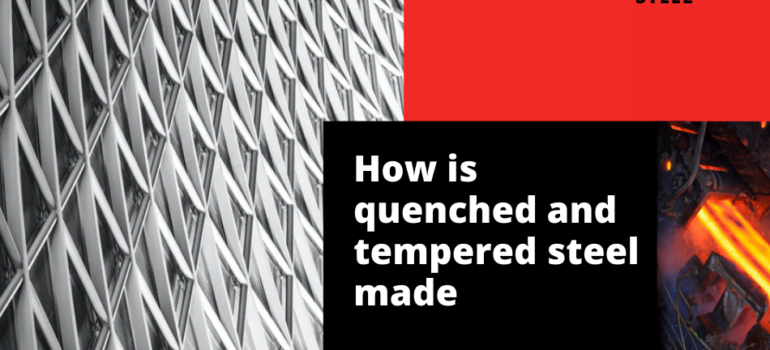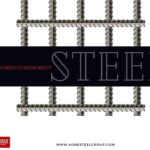Difference between Quenched and Tempered Steel
Quenched or tempered Steel is Steel of high strength and abrasion-free. In addition, it is a highly resistant Steel with high fabrication qualities. And, it undergoes numerous processes for increasing the Steel’s hardness and strength. Hence, comes the name tempered or quenched Steel.
How is quenched steel made
In quenching, the Steel gets heated, and immediate cooling follows it in water comma oil and force. Over a certain period, the Steel has to be heated below the critical point to achieve effective tempering of it. And then it needs to be cooled at a special cooling rate in still air. The forced air primarily consists of Nitrogen. Various parameters such as heating temperature, cooling method, cooling speed, get monitored during quenching the Steel. The formerly mentioned parameters do not have any dependency on the desired Steel’s hardness and mechanical properties.
Reason behind these types of steel
The answer is simple – to attain a higher toughness and ductility. However, it decreases the hardness of the Steel by the end of the quenching process. This happens because the steel achieves less ductility and becomes more brittle after the process of tempering. Thus, tempering completely eradicates the hardness of the Steel. Hence, the quenching makes the steel more complex and robust.
Moreover, the tempered hardness will depend on several factors such as:
- Type of martensite present in the microstructure
- Carbon and alloy content present
- Selection of the tempering temperature
- The residence time of the steel plate at the tempering temperature
- Retained austenite
The carbon content of the Steel usually determines the type of martensite present.
- Steel with low carbon content is called Lath martensite
- Steel with carbon content above 0.60% is known as Plate martensite
All in all, Tempering on Metal gives these types of steel:
- Longevity
- Weldability
- Structural stability
- Machinability
- Ductility
- Toughness
Read: How A-One Steel Group has embarked on a sustainable journey
Different types of quenched and tempered Steel
Quenched and tempered Steel can segment into three different varieties.
- Grade 800: It is a hard and abrasion-resistant Steel. It has an appropriate carbon percentage for optimizing welding. In low hydrogen consumables, this type of quenched Steel can be welded into itself and other grades.
- Grade 400: This quenched and tempered Steel can be successfully cold-formed. This makes it hard and abrasion-resistant.
- Grade 500: This quenched and tempered Steel has medium carbon high hardness. It is also abrasion-resistant Steel. It finds its usage in dump trucks lines, earthmoving buckets, and ground engaging tools.
Most common applications of quenched and tempered Steel
Constant tempered Steel has multiple applications:
- Storage tanks
- Bridges and high-rise buildings
- Excavator and loader buckets
- Deflector plates
- Gear wheels
- Cutting edges
- Earthmoving buckets
- Dump truck wear liners
- Chutes
- Low Loader Trailers
Also read: Why TMT bars are the first choice of every engineer in a construction project
Heat treatment of low carbon steel
As far as we know, low carbon steels are wear-resistant, strong, and weldable. This means they’re perfect for Strain Hardening. It is a process that requires hardening a metal. Here, heat treatment involves heating the Steel to about 850-900 degrees centigrade. Then it gets quenched to create a martensite microstructure.
In conclusion
A-One Steel Group is a leading manufacturer of steel products in South India. Available in standard sizes, A-One Steel Group offers products to meet your specific project needs. The material property of its range is class-apart. Visit the products page to know more!



